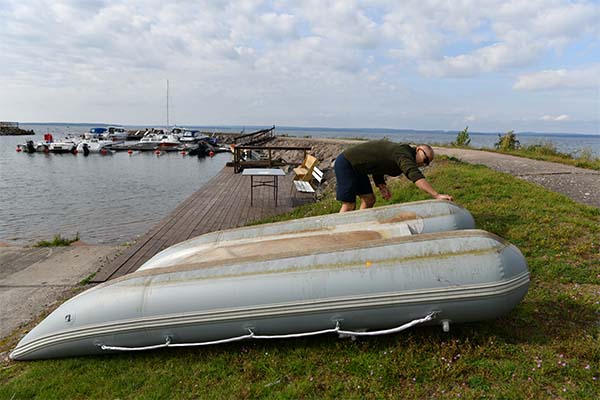How to maintain your inflatable boat
Maintain your inflatable boat properly
If you take care of your inflatable boat, it will be with you for many years. If it gets dirty, clean it with a sponge, water and a little soap. Be sure to remove sand and anything else that could damage the dinghy. Sand can settle between / under the floor and the tubes, so remove the floor when cleaning. If the boat is to be packed in the bags, dry the rubber boat dry before. Check attachment of transom, D-rings, handles etc.

- Keep clean between floor and tube, rinse with water to remove sand and dirt.
- Cleaning the boat is most conveniently done with soapy water, a soft brush and cloth, rinse thoroughly
- NOTE Never use high-pressure washing as it may damage the fabric
- Check the pressure in the tubes regularly, the right pressure is important for the properties of the water to be the best. Too low a pressure makes the inflatable boat slow and sluggish in the water
- Check the pressure relief valves. Never use the pressure relief valves as a sign that you have pumped to the correct pressure, it will wear them out and they will lose their function
- Never transfer the nylon nuts to the oars, it can damage the threads
- It can be stored inflated for a longer period of time during the summer
- Do not leave it in the sun for too long. The dark color will be warm and the boat may be damage.
- If it is stored in bags, it must be clean and dry
- Best stored in temperate areas
- If it is to be stored inflated during the winter, it is recommended to let out some air
Weststream inflatables are constructed with Valmex PVC and require PVC adhesive (preferably 2-component). Use only recommended solvents and adhesives.
Instructions
- Identify the area to be repaired. This can be done by spraying the suspect area detergent in water, where it bubbles it leaks.
- If the hole is only small, cut out a round patch with a diameter of at least 60 mm. Larger holes or cuts require proportionally larger repair patches, but always make sure that you have at least a 30 mm patch around the circumference of the cut or hole and the corners are well rounded.
- Then hold the patch on the tube and mark around it with tape or pencil.
- Clean both surfaces with solvent and spread a thin layer of glue over the surfaces.
- When the first layer is dry to the touch (about 10 to 15 minutes), apply a second thin layer.
- After waiting for 5 to 6 minutes, touch the glue with the back of your hand.
- If it no longer looks wet, heat both areas with a hot air gun to reactivate the glue and attach the repair patch to the tube.
- For best adhesion, press over the patch with a wide roller or the handle of a screwdriver to remove any. air bubbles.
- Let glue and PVC dry for 24 hours before pumping the boat with air.
- The humidity must not exceed 60%.
- Temperature range between 18 and 25 degrees Celsius
- Repairs should not be carried out in direct sunlight, wind or rain
- However, repairs should be carried out in a well-ventilated area
